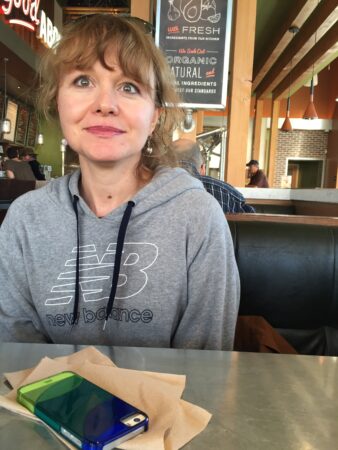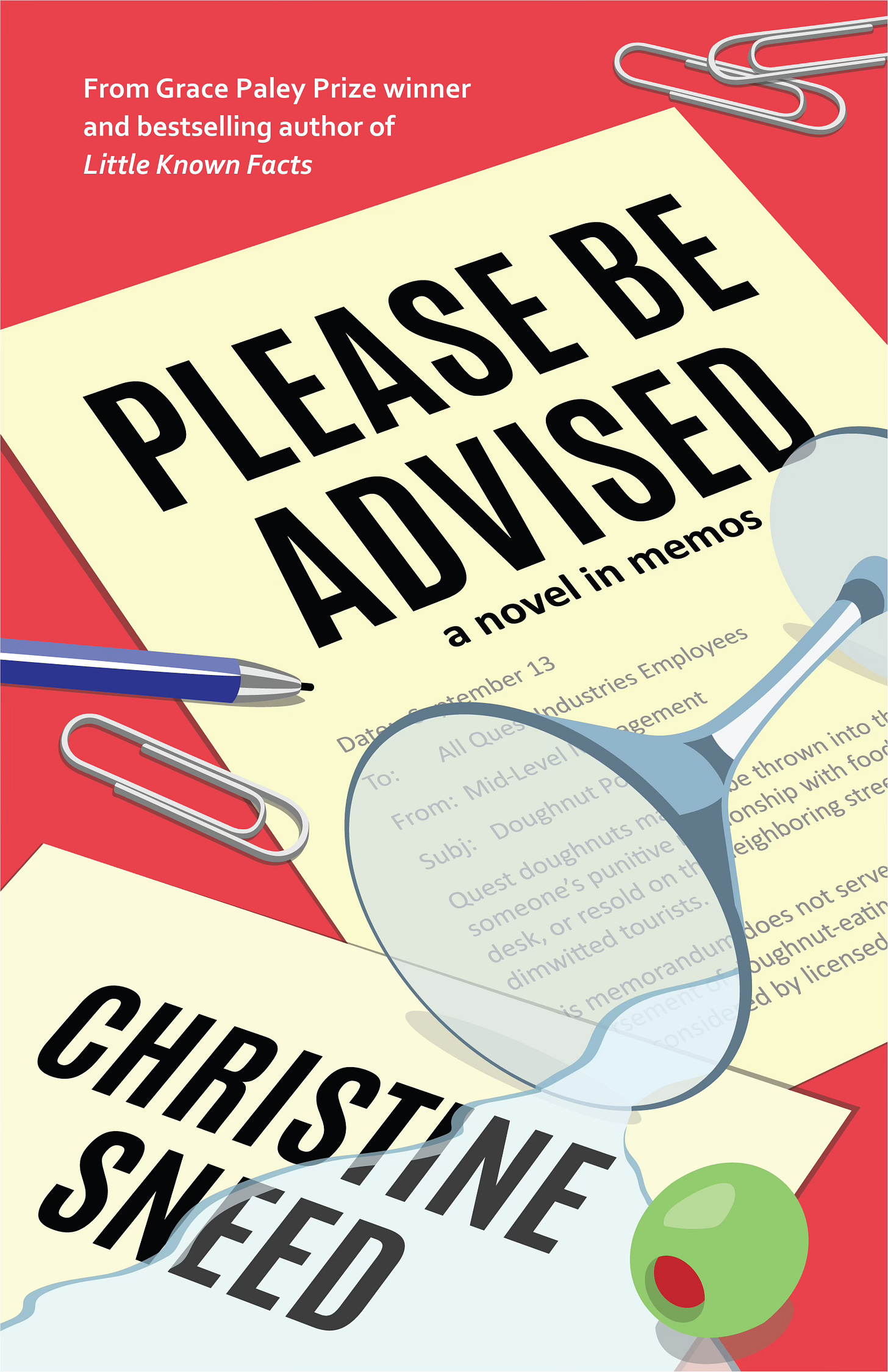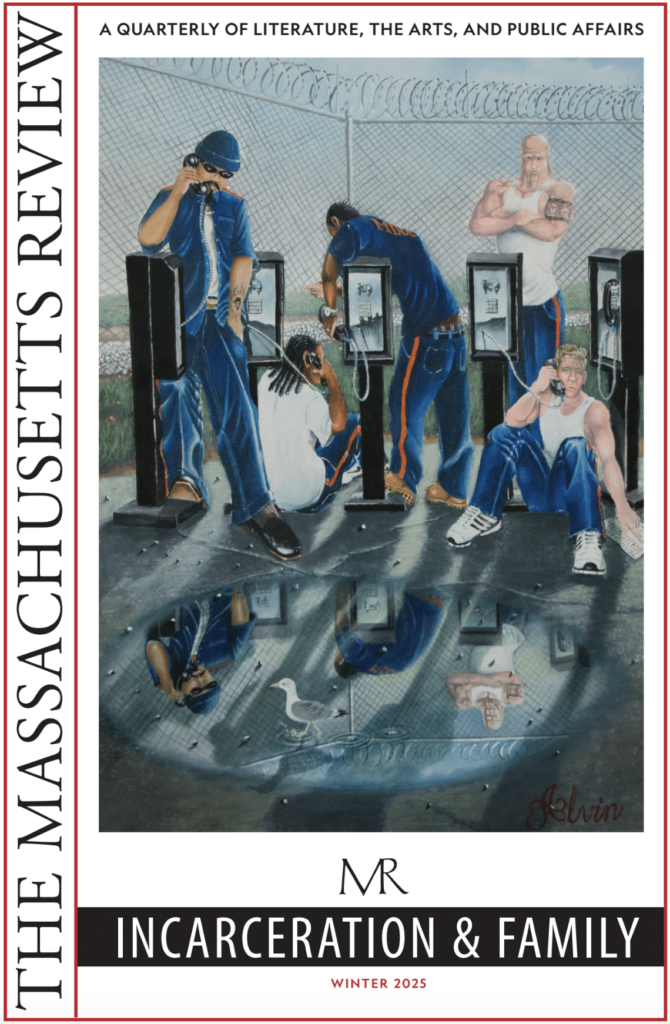(Another) 10 Questions for Christine Sneed

. . . THE PHOTOCOPIER.
If called on to produce more than a dozen double-sided copies, it began to overheat, and on its worst days, Jeanie’s efforts ended in the abduction of one pristine sheet after another into the machine’s inscrutable bowels. There the paper was tightly accordioned, the copier’s companionable hum abruptly truncated by the frantic beeping that signaled a jam.
—from Christine Sneed’s “For Example*,” Volume 66, Issue 2 (Summer 2025)
Tell us about one of the first pieces you wrote.
I don’t have a specific memory of a story or poem I wrote early in life, but around fifth or sixth grade I wrote a poetry collection that was my attempt to write poems like those in Shel Silverstein’s Where the Sidewalk Ends and A Light in the Attic. A few years later I was trying to write a novel that borrowed its plot heavily from Colleen McCullough’s The Thorn Birds. I’m sure it will come as no shock that these homages, although earnest, were terrible!
They did make clear to me that I was very interested in language and story, although it took me about 10 more years to believe I had any business trying to be a writer.
What writer(s) or works have influenced the way you write now?
Sigrid Nunez and John Updike, Scott Spencer, French cinema (Amélie, L’Amant, and Un Coeur en hiver are films especially close to my heart). Other writers whose work I admire are David Szalay (new novel, Flesh, just out!), Rachel Cusk, Elizabeth McKenzie, Jonathan Franzen, Martin Amis, and Edward P. Jones.
What other professions have you worked in?
I’ve spent most of my adult life working in higher ed—first as a TA in graduate school and subsequently as the assistant to the dean of students at the School of the Art Institute of Chicago before I left that job to teach writing at DePaul University and Loyola University.
Presently, I teach creative writing for Northwestern University and Stanford Continuing Studies. I’m also faculty director of the writing program I teach for at Northwestern. My very first jobs were office assistant at a collection agency (that was an interesting formative experience), and cashier/clerk at a drycleaners and the long-defunct Phar-Mor. (I had a lot of different, poorly paying jobs from the ages of 13 to 30.) In college, I also worked as a student guard (policing, not very menacingly, the entrance to campus dorms) and as a textbook department flunky at the university bookstore.
What did you want to be when you were young?
I wanted to be a writer from an early age, but I didn’t know if this was something a person could set out to become. Before college, I think I was under the impression writers had to be anointed through some mystical process rather than making a choice to become a writer through practice and patience and commitment.
As an international business minor and a French major in college, I had an equally vague idea that I would somehow end up working for an international company after college where I would speak French and earn enough money to live in a cosmopolitan city while also flying on occasion to Europe to do not-tedious, possibly glamorous work, but I really had no real idea what it would be.
What inspired you to write this piece?
The title came first, the asterisk included. The list structure was also there from the beginning. I liked the idea of writing a story meant to be an explanation of a kind, i.e. the * and endnote.
Like the story’s POV character, I was feeling morose about a number of things and wanted to write a story that might lift my spirits even though I knew I’d be writing about anomie and the bewilderment many of us experience after college when we need to find a way forward into adulthood and its enchantments and (more numerous) disenchantments. My main character has been out of college for two years when the story takes place, but she’s more confused now about what to do with herself—and what her life means—than she was when she graduated.
Is there a city or place, real or imagined, that influences your writing?
A few places, and most of what I write is set in them: Los Angeles, Chicago, and Paris, places where I live or have lived for extended periods (or visited/lived within a few hours’ train ride of). I think about these cities all the time, as if they are people I’m in love with.
Is there any specific music that aids you through the writing or editing process?
I used to listen to music while writing, but years ago I began to prefer writing without a soundtrack. Even classical music started to detract from my ability to concentrate.
Tangentially, I remember reading an interview with Scott Spencer in which he mentioned he doesn’t listen to music while writing (interestingly, he also said that he has two writing desks: the first for novels and the second for other kinds of writing). In Pasadena, CA where I live, there are plenty of ambient sounds—sirens, car horns and alarms, people talking or shouting out on the sidewalk (I live in a building in a busy part of town), to keep me from feeling isolated. I sometimes use a white noise machine if the neighborhood uproar gets too intrusive.
Who typically gets the first read of your work?
Adam, my longtime domestic partner. I’ve dedicated a few of my books to him, in part as (admittedly inadequate but heartfelt) payment for his time and attention. He isn’t a writer, but he’s a committed reader (he’s read all six of Knausgaard’s My Struggle books; how many have I read? Zilch…) and generally gives me the right sort of feedback—succinct, unsentimental, lucid.
If you could work in another art form what would it be?
I wish I were able to draw or paint. Having worked for five years after graduate school at the School of the Art Institute of Chicago, I met some very gifted artists and continue to revere the work they make. (A painting professor I met at SAIC, Susan Kraut, is a character in my second novel, Paris, He Said. It probably comes as no surprise that I love her paintings.)
What are you working on currently?
A novel set in a part of Florida on the Gulf Coast side that I have an especial fondness for. It’s been hard to concentrate lately—in part because we’re seeing our country being attacked and diminished by selfish, short-sighted assholes, and because I’m waiting for news related to publication of a different novel I finished earlier this year.
CHRISTINE SNEED’s most recent books are Direct Sunlight and Please Be Advised: A Novel in Memos. Her work has appeared in publications including The Best American Short Stories, O. Henry Prize Stories, Ploughshares, New England Review, and New York Times. She has received the Grace Paley Prize, and the Chicago Public Library Foundation’s 21st Century Award, among other honors and has been a finalist for the L.A. Times Book Prize/Art Seidenbaum Award. She teaches for Northwestern University and Stanford University Continuing Studies.




